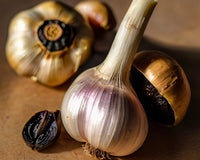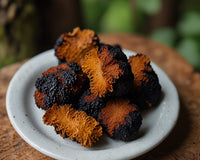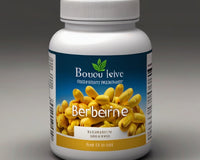Similarities Between Acupuncture and Western Medicine in Treating Parkinson's Disease
Acupuncture and Western medicine share similar mechanisms in treating Parkinson's disease (PD). Both aim to compensate for deficiencies and eliminate excesses. Combining acupuncture with Western medicine can achieve a multi-pathway treatment for PD. Acupuncture may serve as an alternative therapy for treating non-motor symptoms of PD.
Advances in the Treatment of Parkinson's Disease
Parkinson's disease is the second most common neurodegenerative disease after Alzheimer's, often accompanied by motor and non-motor disorders. Motor disorders include tremors, rigidity, gait disturbances, and bradykinesia. Non-motor disorders include anxiety, depression, cognitive impairment, constipation, sleep disturbances, and frequent urination. Due to its complex clinical symptoms and limited treatments, PD significantly impacts patients' lives and increases social and economic burdens.
Treatment Mechanisms of Western Medicine and Acupuncture
Standard treatments in Western medicine include deep brain stimulation, levodopa, and dopamine receptor agonists. However, these methods typically target a single pathological pathway and fail to address the heterogeneity and dynamic etiology of PD. Therefore, multi-pathway treatment methods need to be explored. As part of traditional Chinese medicine (TCM), acupuncture has high potential as an important treatment option for PD.
Theoretical Basis of Acupuncture in Treating PD
The principle of acupuncture is to regulate the body's balance by selecting different acupoints to achieve therapeutic purposes. Its therapeutic effect depends on the functional state of the body. Acupuncture can produce a series of physiological responses by stimulating the body's surface, adjusting the body's functional development, and thus achieving balance. Experimental studies have shown that acupuncture has a significant effect on treating motor disorders and neurodegenerative diseases.
Specific Mechanisms of Acupuncture
Acupuncture achieves its therapeutic effects by compensating for deficiencies and eliminating excesses. Compensating for deficiencies includes protecting dopaminergic neurons, increasing dopamine levels, and activating related brain regions. Eliminating excesses involves inhibiting neuronal damage caused by aggregation-prone proteins, high levels of neuroinflammation, and oxidative stress, preventing further decline in SN striatum function.
Practical Applications of Compensating for Deficiencies
Acupuncture can enhance the survival of dopaminergic neurons by activating survival pathways, regulating neurotransmitters, and promoting neurotrophic factors. Experiments show that acupuncture can increase VGluT1 levels in the brain regions of semi-PD rats, which is related to the improvement of PD motor symptoms by acupuncture. Additionally, acupuncture can increase the expression of brain-derived neurotrophic factor (BDNF) and glial cell-derived neurotrophic factor (GDNF), protecting dopaminergic neurons.
Practical Applications of Eliminating Excesses
Acupuncture can reduce the concentration of pathological products by inhibiting the activity of GABAergic neurons in the SNr, reducing the accumulation of brain iron, and detoxifying methylglyoxal, thus achieving the effect of protecting DA neurons. Studies have shown that acupuncture can effectively lower Ach and Glu levels in the SN and improve motor disorders in PD rats.
Future Research Directions
Future research should focus on the specific mechanisms of acupuncture in compensating for deficiencies and eliminating excesses. The application of acupuncture in non-motor symptoms (NMS) such as constipation, sleep disorders, anxiety, depression, and cognitive decline also needs further exploration. Additionally, how to combine acupuncture with Western medicine to achieve better therapeutic effects is an important direction for future research.
Conclusion
Acupuncture and Western medicine share many similarities in treating PD. Acupuncture can achieve multi-pathway comprehensive treatment by compensating for deficiencies and eliminating excesses. Future research should further explore the specific mechanisms and clinical applications of acupuncture to provide more treatment options for PD patients.
References
-
Fan, J.-Q., Lu, W.-J., Tan, W.-Q., Feng, W.-C., & Zhuang, L.-X. (2022). Acupuncture for Parkinson’s disease: From theory to practice. Biomedicine & Pharmacotherapy, 112907. https://doi.org/10.1016/j.biopha.2022.112907
-
Wang, H., Pan, Y., Xue, B., Wang, X., Zhao, F., Jia, J., & Liang, X. (2011). The antioxidative effect of electro-acupuncture in a mouse model of Parkinson's disease. PLoS One, 6(5), e19790. https://doi.org/10.1371/journal.pone.0019790
-
Kim, S. N., Doo, A. R., Park, J. Y., Bae, H., Chae, Y., Shim, I., Lee, H., & Park, H. J. (2011). Acupuncture enhances the synaptic dopamine availability to improve motor function in a mouse model of Parkinson's disease. PLoS One, 6(11), e27566. https://doi.org/10.1371/journal.pone.0027566














